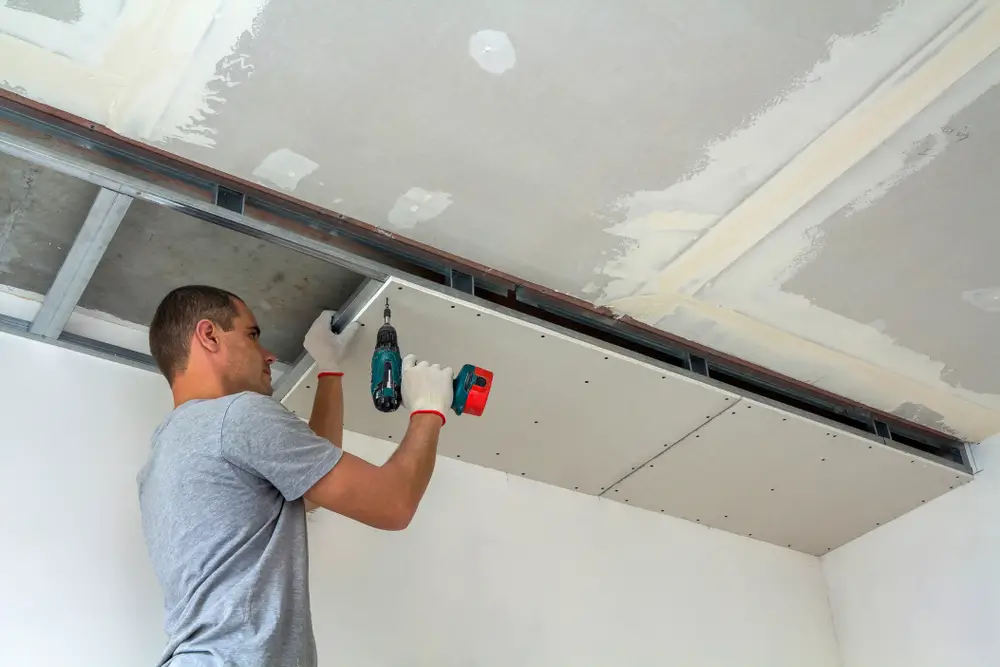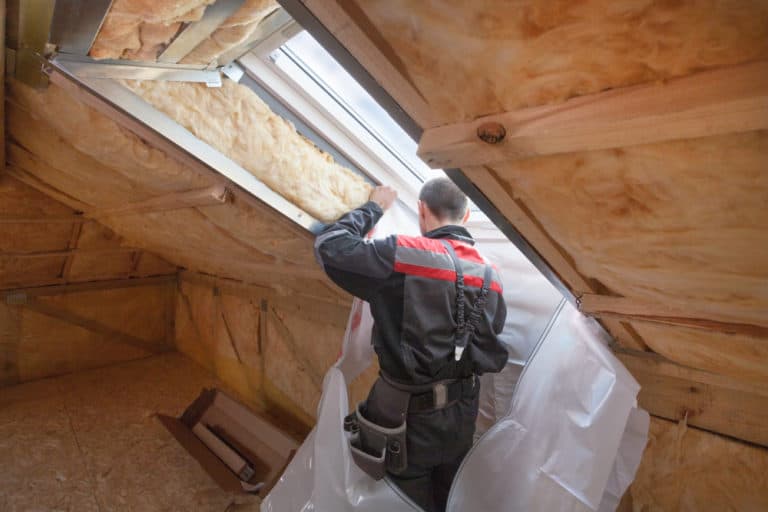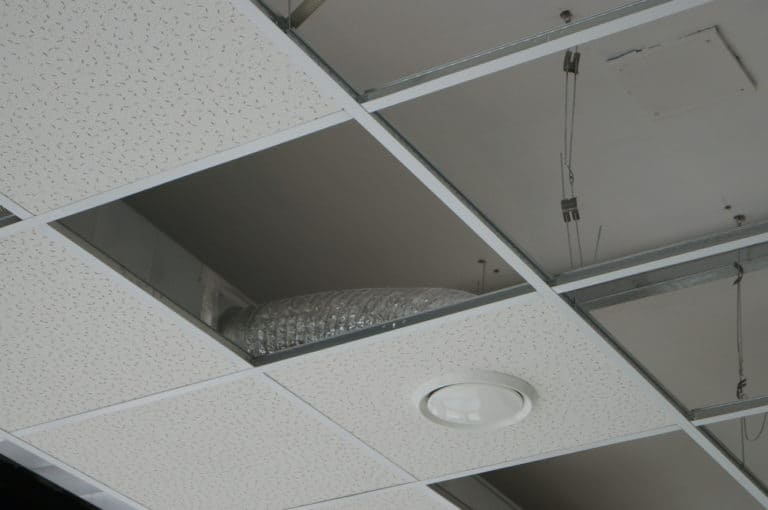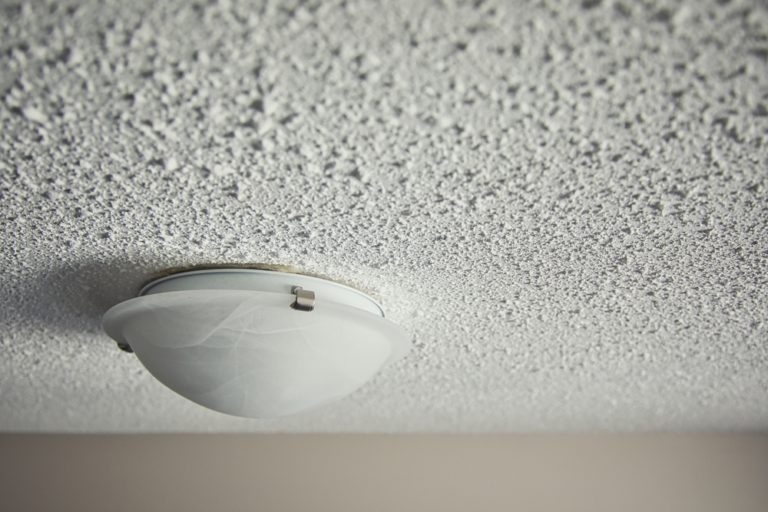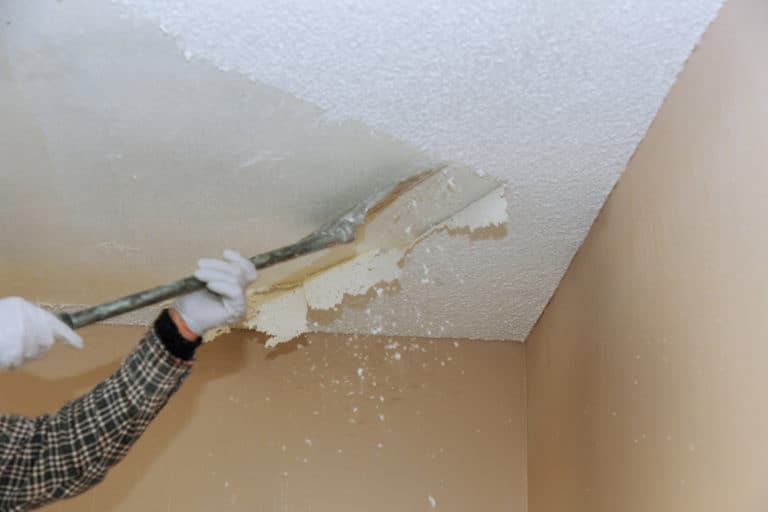Alternatives To Sheetrock Ceilings
Sheetrock is a brand of drywall typically made out of gypsum. The difference between sheetrock and other types of drywall is that it’s more suitable for ceilings. If you’re looking for different types of ceilings that you can have installed, then this is the article for you.
You can choose from various materials, but a general rule is that ceilings should be lightweight, easy to install, and hold up well, especially for specific ceiling designs. We also need to consider the functionality of these materials for your ceiling.
Ceilings may not seem like much, but they serve a function in our rooms. Depending on what you want, we need some fixtures over our heads, such as lights, sprinklers, speakers, and much more. We’ll need to explore the types of materials used and see how they can work for your different spaces.
- Acoustical Panels
Acoustical Panels are a great option if you live in an apartment building or need to make a room quieter. The great thing about acoustic panels is that they’re often stylized already so that you can skip finishing your ceiling.
- Wooden Panels/Planks
If you’re looking for a more textured or detailed ceiling, then wooden panels might just be the one for you. Varnished Wooden panels look great and are inexpensive compared to other ceiling types.
However, be aware that wood tends to age, and if you’re not careful with its construction, it may end up warping or rotting.
- Concrete
A bare concrete slab can also be a ceiling for a room. The only issue with having a concrete ceiling is that utilities and fixtures such as lighting may be difficult to install or repair unless you opt for an exposed ceiling design.
- Plaster
Plaster is an excellent material considering the additional strength and protection it provides for ceilings; however, it can be pretty challenging to work with.
- Vinyl
Vinyl ceilings work excellent because they are light and relatively easy to install. Vinyl as a material is quite durable since it neither rusts nor rots and doesn’t require as much maintenance. Lastly, vinyl usually isn’t painted on and comes with a finish already when purchased.
- Plastic Panels
Plastic panels are made out of different types of polymers, depending on what characteristics you need. You’ll most likely be working with composite plastics as these are the most common type.
- Acoustical Blanket
Fabrics aren’t often used for ceilings, but in some cases, they can work. An acoustical blanket works well with irregularly shaped ceilings(Curved or Angled) since the blanket can match its form.
- Masonry
Masonry ceilings are pretty uncommon in our day and age. Usually, this is achieved by laying down brick by brick in a curved manner, such as a vault, to hold the entire ceiling together.
- Metal
A more industrial option that can opt for is to have a metal ceiling. Metals such as aluminum or galvanized iron are easily shaped to the desired ceiling form. Aside from that, it’s also easy to work with since metal
- Glass
A glass ceiling can potentially work given the right conditions. The advantage of glass is that you can get creative with your design. If you are worried about it shattering, then you should know that glass can be made as durable as it needs to be.
A good rule of thumb is to match your ceiling always with the rest of your room. The type of material you pick from this list should also complement the type of ceiling you have.
Lastly, it’s also essential to determine the functionality of that material in your space and construct it well to ensure that it lasts.

Types of Ceilings
If you’re looking for the correct type of ceiling material, you’ll also need to know the different types of ceilings. The design of your ceiling will determine how different factors(water, sound, light, etc.) interact with the material you’ve chosen. Here’s a list of ceiling types and what to look for.
- Coved Ceiling
Coved ceilings, as the name implies, are shaped like a round cove. Generally, curves are pretty difficult to achieve, especially with lower budgets. If you want a cove ceiling, a good option would be easily bendable materials such as wood, rubber, and plaster.
- Cathedral Ceiling
Cathedral ceilings are ceilings that have sloping sides that meet at a middle point, forming an inverted “V” shape. These types of ceilings are often used in larger areas since it reduces the steepness of the “V” shape.
This type of ceiling is often used to make a space feel bigger, hence the name, and as such, you typically want to go with materials that can cover a larger area well. Wooden panels would work great with this ceiling type.
- Flat Ceiling
The classic and simple flat ceiling is the most versatile type of ceiling you can work with since it doesn’t need much to work well. More often than not, this type of ceiling is one of the lowest, so you want a material that looks nice up close. Gypsum board is often the best material to use, but for alternatives, you can also opt to use plaster.
- Beam Ceiling
Beam ceilings are simply ceilings, usually flat, with exposed beams. The exposed beam adds a different element that makes this much more interesting to work with.
A good idea for beam ceilings is to use alternating or different finishes while using the beam as a divider between the two. For example, you can have wooden panels form a pattern on one side of the ceiling while having plain acoustic boards on the other.
- Tray Ceiling
Tray Ceilings are ceilings with a rectangular indent with them, making the shape of a tray onto your ceiling. These are often used in spaces that need to feel more significant or simply for better lighting. A good technique is to differentiate the tray part of the ceiling from the other ends.
You can opt to get glossier materials that reflect light better within the tray section while having more matte materials on the outer end. The contrast works well and can even be further developed by using complementary colors.
- Coffered Ceiling
Coffered Ceilings contain multiple rectangular grids that form together. They somewhat look like beehives and are often used to complement the construction of the rest of your ceiling. It’s quite difficult and much more expensive to build compared to the rest of the options here.
- Suspended Ceiling
The opposite to tray ceilings, suspended ceilings have a rectangular extrusion that’s often used to highlight a certain area in a room.
- Exposed Ceilings
Exposed Ceilings, as the name implies, bares out all the utilities for an industrial aesthetic. Surprisingly, the best material that fits with this type of ceiling are concrete boards since you don’t need to work through the material for this type of installation.
- Shed Ceiling
Shed ceilings are angled one way only. This is typically used for smaller spaces or in spaces connected directly to a home’s roofing. It’s pretty unpopular, considering it’s inefficient and difficult to work with. Compared to other roofing types.
These are the different types of ceilings that you will encounter. You might encounter multiple types of ceilings, and the challenge is usually in making them blend in with one another throughout an entire level. Having a set material and finish type of wooden panels can make installation and maintenance much easier.
Don’t forget that aside from mates, you should also take time in choosing fixtures to match your ceiling’s design.
Types of Ceiling Lights
The lights that you use on your ceiling also plays a big role in how it will look. More often than not, this is often what catches people’s attention to your ceiling, so it only makes sense to pick the type of lights that would match it. Here’s a brief list of different kinds of ceiling lights:
| Track and Rail Lights | Often used in areas that need multiple lights in one area. It works great as an accent light and is easily customizable |
| Flush Lights | Often used in closets, bathrooms, and small places in general. Flush lights are covered with glass to help light expand the light over an area. |
| Recessed Lights | Recessed lights are great if you want your light to have shape. These are often used in corners of an option to have a “mini spotlight” effect. |
| Indirect Lights | Great for ambience. This is often down in ceilings with multiple levels and provides great dim lighting for leisure areas(bedroom, living room, etc.). |
| Utility Lights | Great for working areas, which is why you often see them in offices. |
| Chandelier | Chandeliers are often reserved for common areas such as dining rooms and living rooms. It’s often only installed if you have a high-enough ceiling to support it. |
| Island Lights | Hanging lights that are paired together, usually in threes, to light up an island-type kitchen. Also works great in other rooms as long as you have the space for it. |
| Pendant Lighting | Pendant light acts like recessed lights but is much more intense. They can replace chandeliers since they are usually more affordable as well as more modern looking. |
| Reverse-Pendant Lighting | Reverse-Pendant acts as an indirect hanging light, wherein light is reflected by the ceiling. |
| Ceiling Fan Lighting | Attached directly to ceiling fans, this type of lighting is quite robust and is often made up of the different types of lights mentioned above. |
Choosing the right lighting makes your finishes that much more noticeable. Remember as well that the lighting fixture themselves also improve the appearance of your room, so they should also match it.
How Are Ceilings Constructed?
To understand how materials and the ceiling itself interact with the rest of the room, we first have to get into how ceilings are built.
For a quick rundown, think of a room as a box. We know that the top of the box is held up by the different “walls” around it, which in our case is our studs, columns, and walls. These “walls” are used to hold up beams and joists that serve as the base that will hold up your ceiling.
Instead of seeing joists and beams collecting dust, we have a ceiling constructed to cover them up. The ceiling also protects these structural members and a space where fixtures can be fitted.
Conclusion
The type of ceiling that you have and the materials that you choose for it should be able to work together. There are many alternatives to sheetrock ceilings that you can choose as long as you build them in the right way. Remember that your main priority is to ensure that you have a ceiling that functionally works and lasts.

